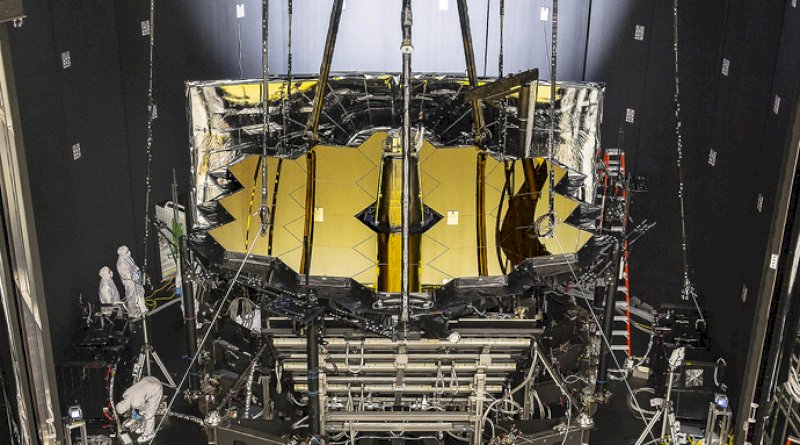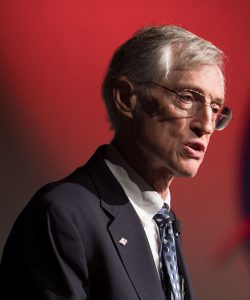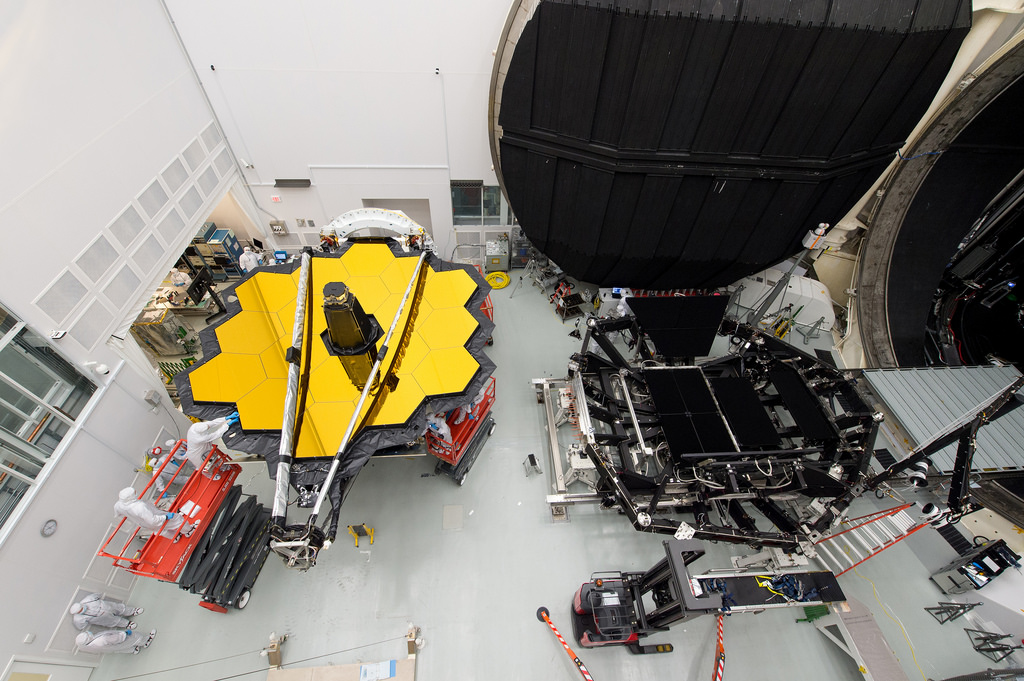James Webb Space Telescope Reflector Set for Testing in Houston

CAPE CANAVERAL: The 21-foot-tall reflector of the James Webb Space Telescope (JWST) has moved from Goddard Space Flight Center in Maryland to Johnson Space Center in Houston for vacuum testing. John Mather, Senior Project Scientist, James Webb Space Telescope addressed a crowd of over 300 space industry members of the National Space Club Florida Committee at their monthly luncheon in Port Canaveral today with updates on the project.

Mather explained that the reflector and instruments were flown from Maryland to Houston. In preparation for the Webb telescope’s upcoming cryogenic testing, engineers at Johnson have suspended it from the ceiling of the center’s historic Chamber A. Mather said that the vacuum testing could being imminently. Webb will remain suspended in the chamber for the entire cryogenic testing phase, which will last about three months. In space, the telescope must be kept extremely cold, in order to be able to detect the infrared light from very faint, distant objects.
Mather explained that this testing is crucial: "We need to know that the instruments can be focused. With the Webb telescope parked 1 million miles from Earth, it is too far away for astronauts to service the telescope. We have to make sure that we get it right on the first time."

Mather was referring to the five servicing missions that were able to fine-tine the Hubble Space Telescope using astronauts aboard the Space Shuttle from 1993 to 1999.
From Houston, the reflector will travel by airplane to California where it will be mated with the spacecraft bus and tennis-court-sized sunshield. The five-layer sunshield will keep temperatures on the sun-facing side at 185 degrees Fahrenheit while temperatures on the other side dip to -400 degrees.
From California, the entire assembly will travel by barge through the Panama Canal enroute to Guina Space Centre for a 2018 launch atop an Ariane rocket provided by the European Space Agency (ESA). The James Webb Space Telescope is an international collaboration among NASA, the ESA and the Canadian Space Agency.
Mather's remarks ranged from the beginnings of the Universe and contrasted the earliest telescopes to the Hubble. The JWST is infrared optimized and will be cooled to within 10 degrees of absolute zero. The JWST will examine every phase of our history, from the first galaxies to form, the the history of our own Solar System. Mather explained that the JWST can be focused on objects at the edge of the galaxy, but also at objects as close as the Moon. "We would be able to observe a bumble-bee-sized object on the Moon" explained Mather.
Today's event was sponsored by The National Space Club Florida Committee (NSCFL). The NSCFL is a non-profit corporation composed of private individuals representing industry, government, the Department of Defense, regional educational institutions, and the public – all of whom share a commitment to increasing public awareness of America's aerospace programs. A schedule of future events can be found at the NSFCL website.

Stunning, full color photo book covering every east coast launch spanning 2014-2015, including the first-ever powered landing of a SpaceX Falcon 9 rocket.
More Info



